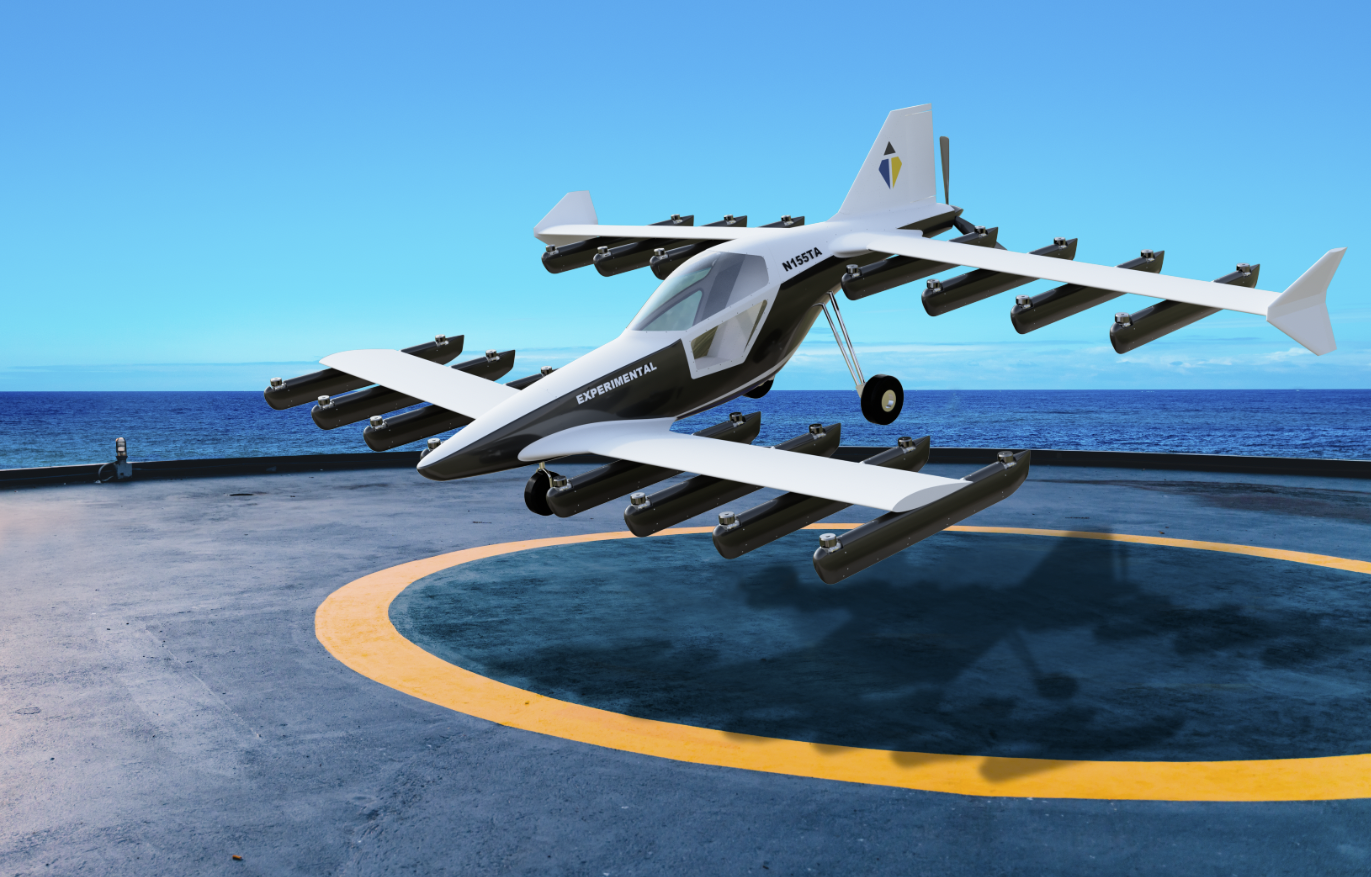The idea of flying cars zooming across the sky has long been a futuristic dream of mankind. Now this dream is being realized in electric vertical take-off and landing aircrafts (eVTOLs). The new space race has begun, and instead of shooting for the moon, companies around the world are vying to produce electric aircraft that will be practical, safe, and useful for the new era of transportation.
The eVTOLs need to be able to carry people safely, while also containing large lithium batteries, which can be rather heavy. Engineers at these pioneering companies are sampling different lightweight materials for the vehicles’ parts and bodies, and many are using aluminum, as it fits that bill. Aluminum is a strong contender as a material of choice for these electric aircraft, as it is non-corrosive. Furthermore, although aluminum is lightweight, its strength-to-weight ratio is difficult to match, as proven in crash test ratings for on-ground electric vehicles.
An Aluminum eVTOL
Headquartered in Bunkyo-ku, Tokyo, Japan, teTra aviation corp., is vying to be one of the first companies to produce marketable eVTOLs for personal and commercial use. Their Mk-5 personal electric aircraft (Figure 1) has mainframe and fuselage composed of aluminum. The company says that it chose the metal for its ability to control fatigue, strength, and resistance to stress.

Currently, teTra aviation sources their aluminum through Yoshimasu Seisakusho (a teTra shareholder and Nadcap company) in Japan. However, the company says they are open to aluminum suppliers in the U.S. who are interested in supporting or investing in their projects.
Mostly 2024-T3 and 6061-T6 aluminum alloys were chosen for the Mk-5 (Serial No. 2), because they fit the company’s future mass production goals due to cost, availability, and tooling capabilities. The Mk-5 is reportedly comprised of 80% aluminum and 20% composites, with most of the vehicle’s main structure being made from sheet and extrusions.
For joined parts, teTra wanted to avoid bonding aluminum to composites as much as possible to prevent the risk of corrosion at joining sites. Instead, they use carbon fiber reinforced polymers with glass fiber reinforced overlapped joints for these critical areas.
Specifications
Multiple models of the Mk-5 are currently in the works, and the specifications for each will vary depending on a number of factors. For example, the Mk-5 (Serial No.2) is designed for single occupant use and has only one seat. The fully electric compact aircraft measures at 8,620 mm wide, 6,150 mm long, and 2,510 mm high. Accordingly, the small eVTOL requires a certain weight of pilot, as it was made to carry one person who weighs up to just 174 lbs. Pilots will use a joystick and fly-by-wire electric controls to carry the aircraft to its cruising speed of 67.1 mph for a range of 47 miles.
The Next Phase
Simulation runs for the Mk-5 were first tested with an algorithm, and now the company is performing open air flights. Manned flights will be the company’s next phase towards commercial viability and this will happen within the next few months, according to the company. TeTra plans to achieve a record of safe flights by summer 2022, when they hope to begin delivering the next generation of transportation to enthusiastic customers.
For now, the company is strictly focusing on developing eVTOLs for personal use, but they predict a move towards commercial electric aircraft in the near future. “We expect personal transport eVTOLs to become part of the fully autonomous sharing economy, just as Elon Musk plans to do with electric vehicles,” said Tasuku Nakai, CEO at teTra aviation corp.
The Future of Aviation
In February 2020, Pratt & Whitney, a division of United Technologies Corp., presented their Disruptor Award to teTra aviation at the GoFly Prize Final Fly Off competition at the Moffett Federal Airfield, part of the NASA Ames Research Center in Mountain View, CA. The Disruptor Award recognizes teams that challenge the status-quo, deliver unique thinking on a complex issue and consider safety, reliability, durability, and system integration. TeTra received a $100,000 prize as part of the award, which honored the team for its truly innovative approach and going above and beyond in developing their personal flying device.
“Throughout the two years that we worked with the teams in the GoFly competition, we were impressed with the passion and commitment teTra had to innovate personal flight. This truly aligns with Pratt & Whitney’s 95-year history of transforming the future of aviation,” said Geoff Hunt, senior vice president of Engineering at Pratt & Whitney. “TeTra aviation demonstrated the spirit of innovation, disruption, and perseverance to see their demonstration vehicle through the challenges of developing a revolutionary new air vehicle.”
Editor’s Note: This article first appeared in the December 2021 issue of Light Metal Age. To receive the current issue, please subscribe.
